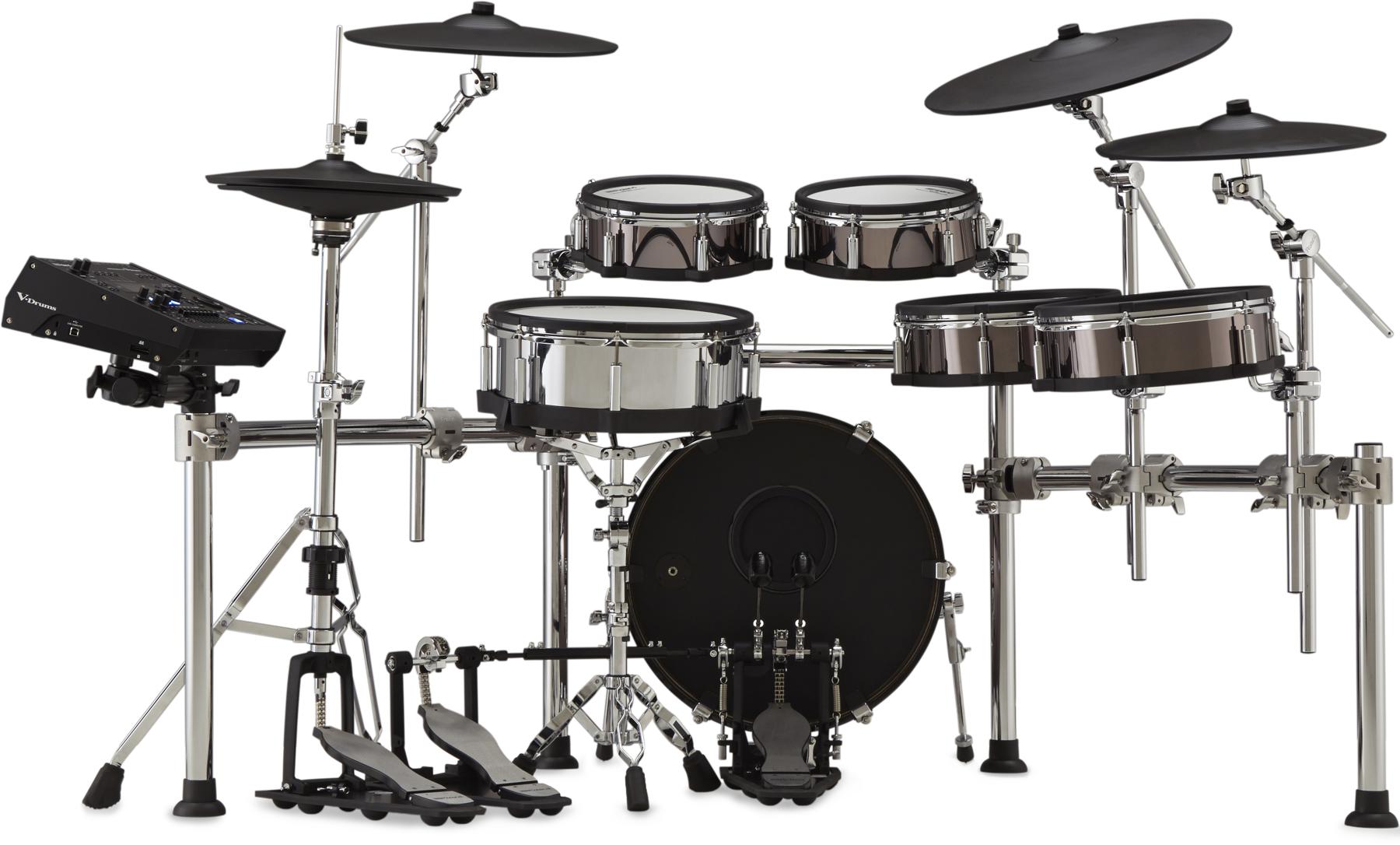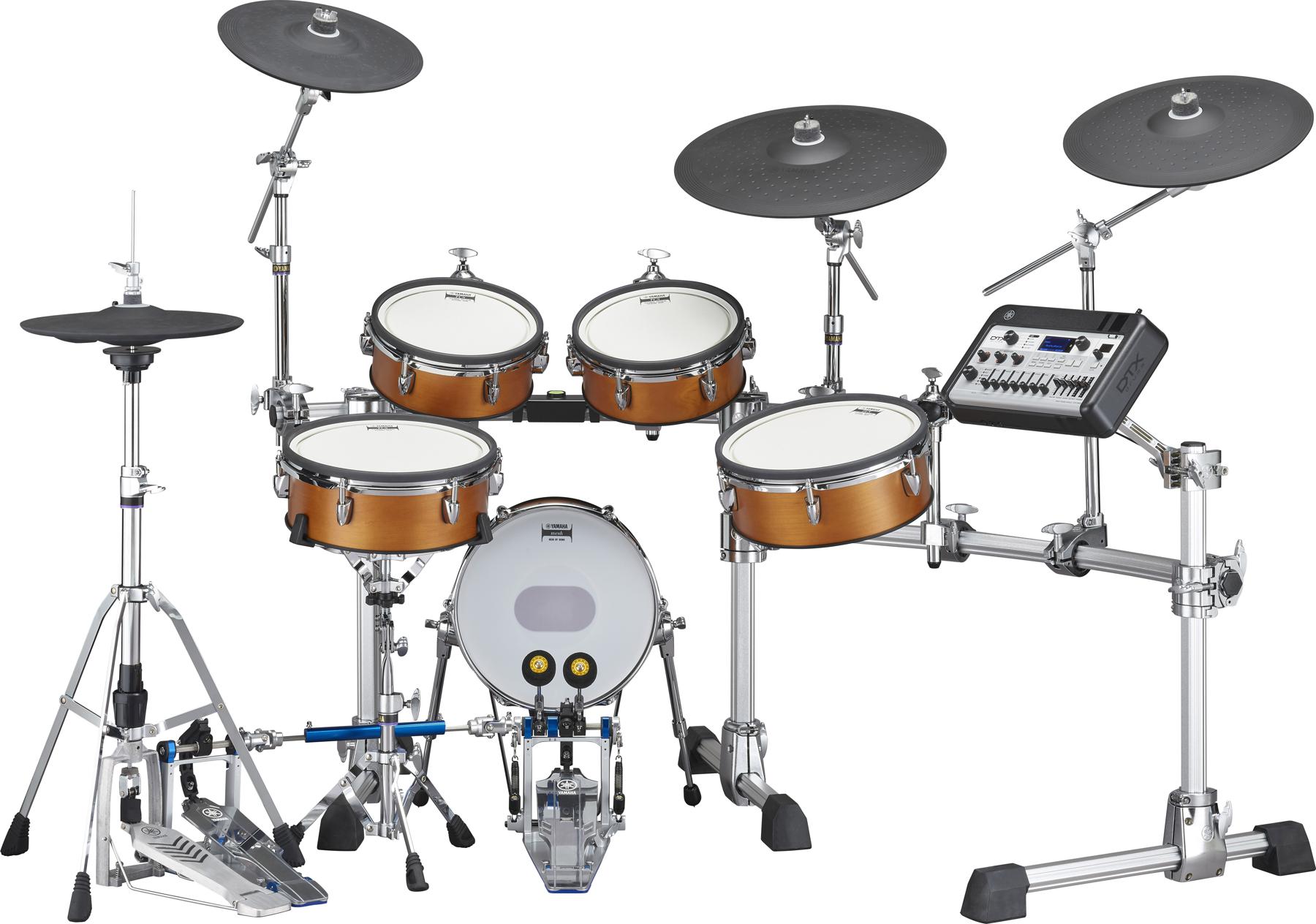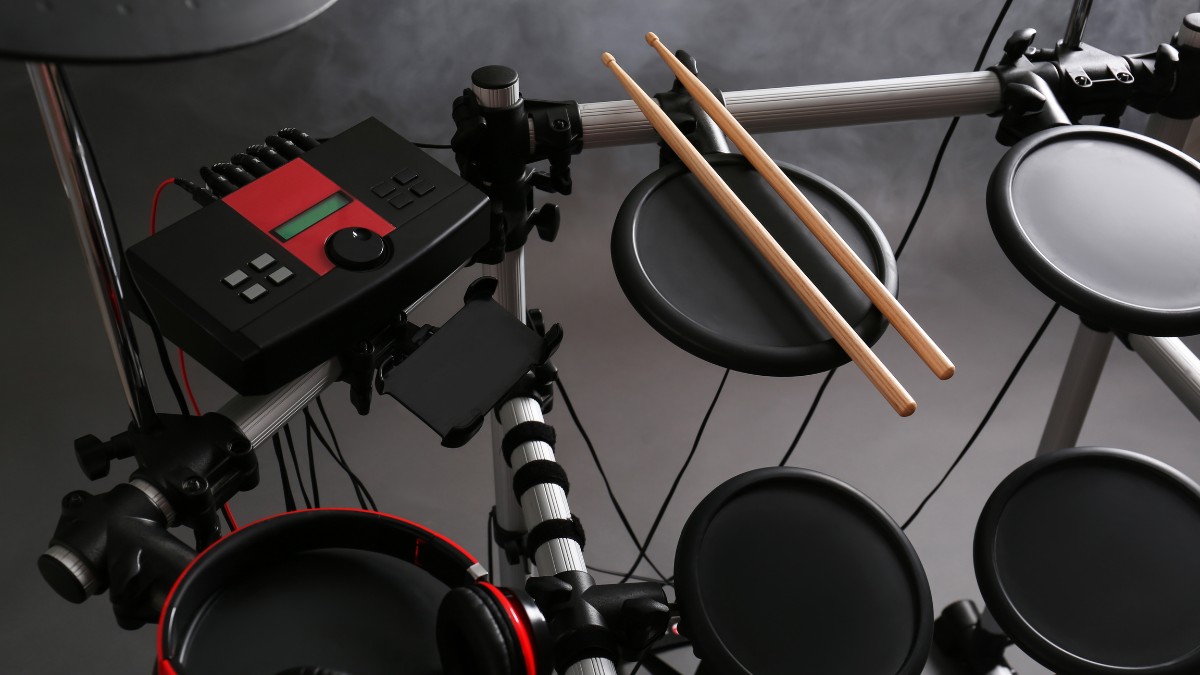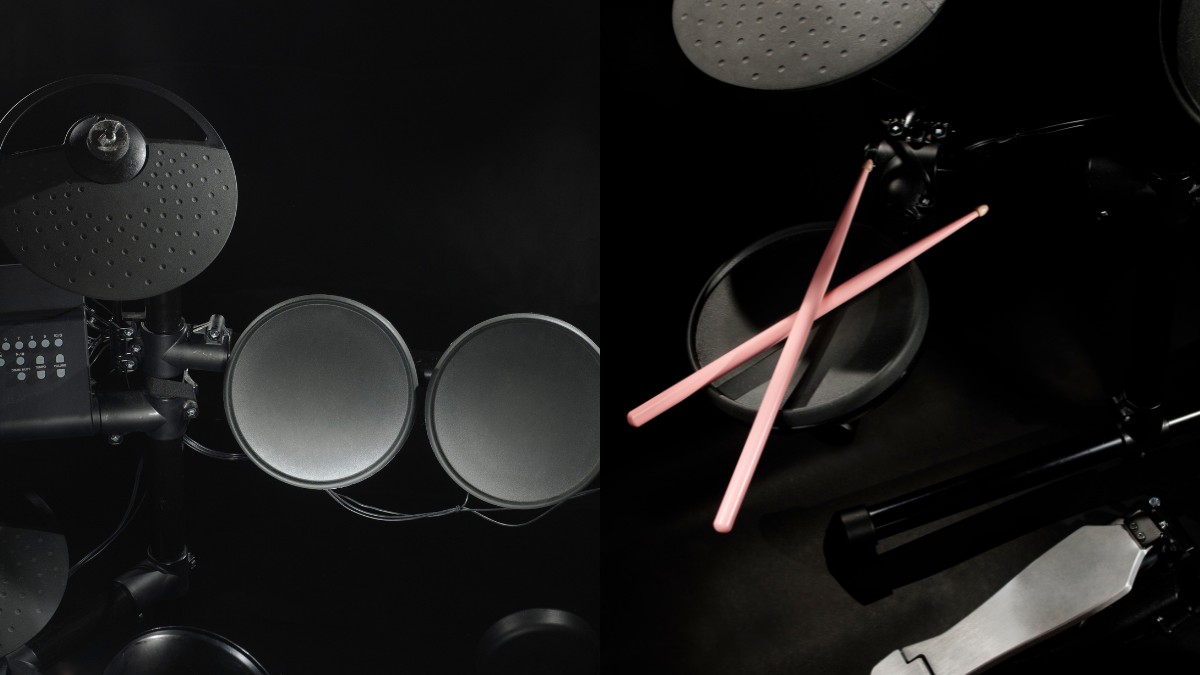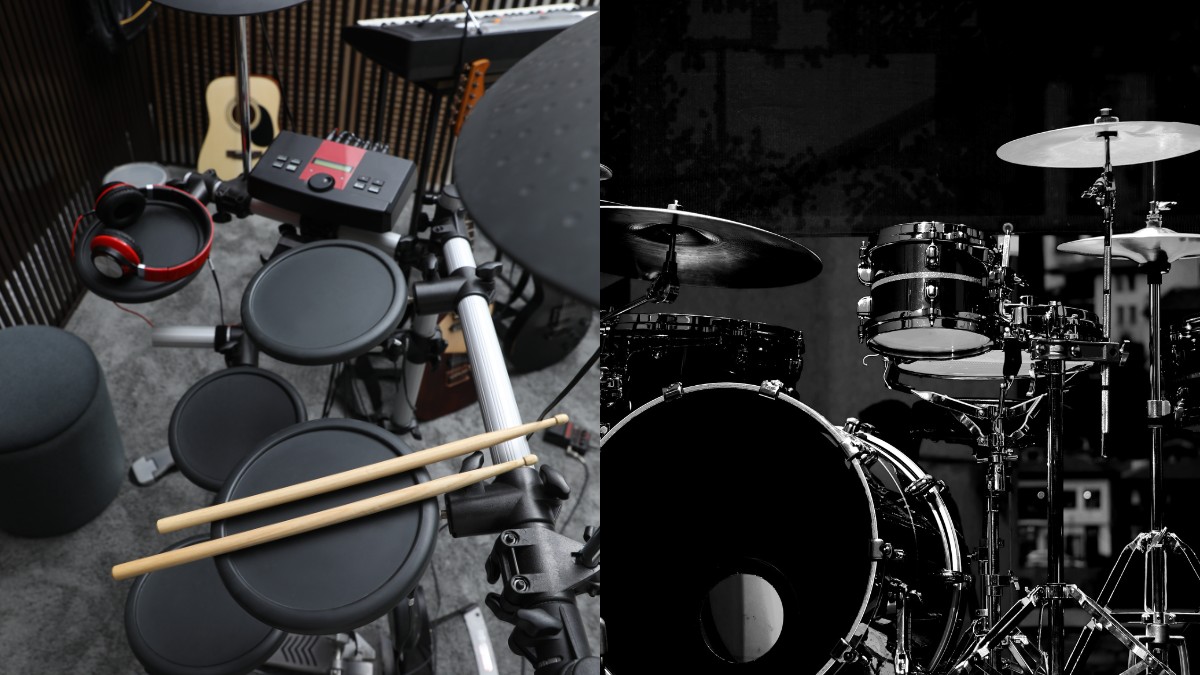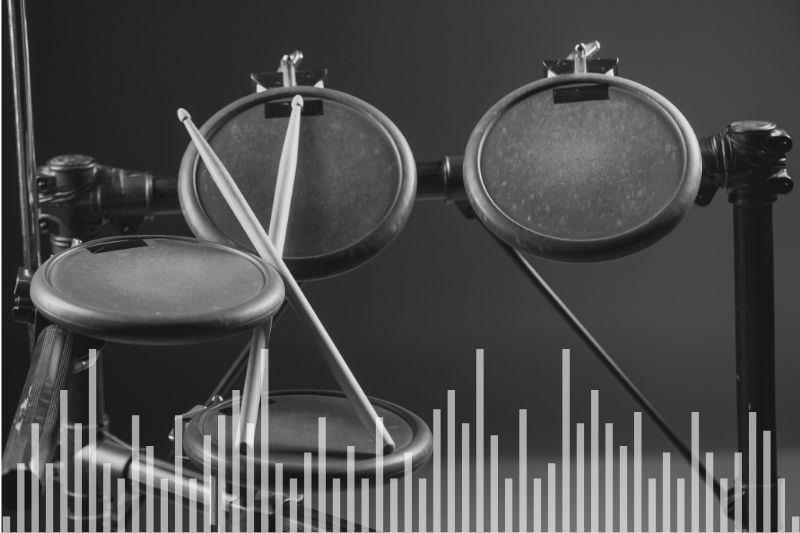Roland vs. Yamaha for Electronic Drums – Which are Better?
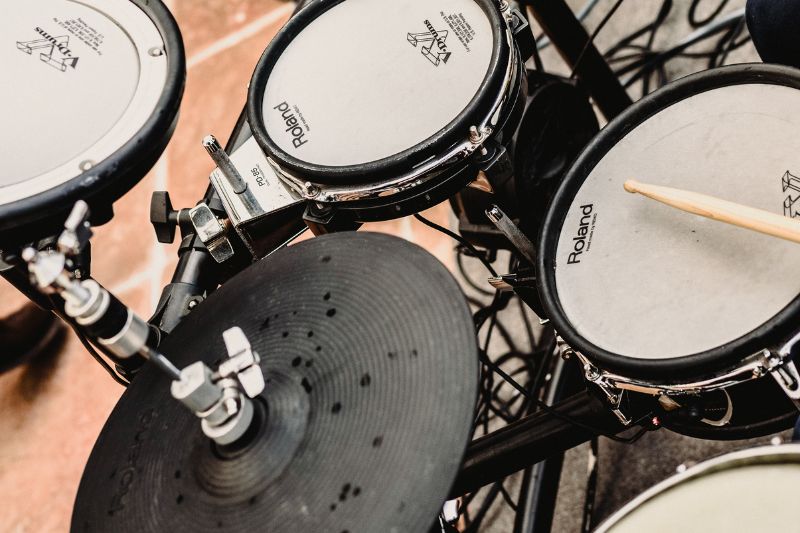
Roland and Yamaha are two of the best brands for electronic drums. The main differences between the two brands are their drum heads (mesh vs silicone) and the sounds that their drum modules produce. Both of these are very much a matter of preference.
Roland has been pushing heavily in recent years with many electronic drum set releases across all product ranges, while Yamaha has been putting their foot off the gas a little with their e-drum product releases.
Contents
- High-Level Comparisons Between Roland and Yamaha
- Which Electronic Drum Kit Is The Best?
- Which Brand Offers Better Beginner Electronic Drums?
- Which Brand Offers Better High-End Electronic Drums?
- Which Brand Is More Reliable?
- Why Are Roland Drums So Expensive?
- Are Expensive E-drum Kits Worth It?
- Can You Make Cheap Electronic Drum Kits Sound Better?
- More About Roland vs Yamaha
- Conclusion
High-Level Comparisons Between Roland and Yamaha
Here are some of the differences and similarities between the two brands.
- Price range: Roland and Yamaha have e-drum kits in almost every price range on the market; the high-end kits by Roland tend to be more expensive.
- Build quality: Roland is known for their build quality and durability, but Yamaha is not far away. E-drum kits from both companies proved to be very durable over the years.
- Drum pads: Yamaha’s best pads are silicone drum pads. Roland’s best pads are mesh heads. Both brands still use rubber heads for some of their lower-end kits.
- Playability: You won’t be disappointed with any of the e-drums by Roland and Yamaha regarding playability and sounds, though my opinion is the current flagship kits from Roland come out on top. The entry-level kits from both brands don’t offer great value compared to the budget brands, but they tend to have the best build quality.
- Sound quality: Some people prefer the sound of Roland’s module, while others love Yamahas. I think Roland’s is starting to sound better on their higher-end kits in recent years. That said, strangely, good drum VSTs sound better than almost everything Roland and Yamaha are coming out with. If you have a good kit with MIDI connectivity, you can get some of the best e-drum sounds available using drum plugins.
Which Electronic Drum Kit Is The Best?
Roland’s flagship models, the TD-50KV2 V-Drums and the VAD706 V-Drums Acoustic Design, and Yamaha’s flagship DTX10 Series are among the best e-drum kits on the market right now. But when it comes to which one is the best for you and which one suits your needs best, you would have to decide that by yourself.
Of the three kits, the VAD706 has the best stage presence. Therefore, it would be my first pick if I played a lot of live performances. The TD-50KV2 has a smaller footprint and is great for portability and smaller spaces. It also works great in a studio. Lastly, the DTX10 Series is somewhere in between regarding looks and portability, but it also has some advantages over both of Roland’s e-drum kits.
One thing to note about these flagship models is that Roland’s tend to cost much more than the Yamaha DTX10 Series.
Which Brand Offers Better Beginner Electronic Drums?
Both Yamaha and Roland have budget-friendly options for beginners. It can be tricky when you shop for their lower-end e-drum kits, as there is much to be mindful of. Generally, Roland’s budget-friendly e-drum kits have great build quality, but Yamaha’s have more features and better value overall.
Also, if you are looking for a budget-friendly electronic drum, I would suggest that you also look at some other brands, such as Alesis, as they generally offer better value for lower-priced e-drum kits.
Which Brand Offers Better High-End Electronic Drums?
In the competitive world of electronic drum kits, Roland and Yamaha are two prominent contenders, especially in the mid-tier and top-end segments. Roland’s top-tier kits, such as the TD-50 Series and VAD706 kit, stand out as the ultimate winners for those who value the highest quality.
These kits are powered by the TD-50 drum module, known for its intricate and fantastic capabilities, making it the most sought-after drum module in the market. It’s important to note, however, that the TD-50 Series and VAD706 kit come with elite price tags, costing over $8000, reflecting their status as premium drum kits.
Roland also offers some lower-spec kits that are still considered high-end. The TD-27 kit, for example, is more than capable of meeting the demands of professional settings, while the TD-17 kits are perfect choices for intermediate drummers.
On the other hand, Yamaha offers competitive options, especially in terms of affordability. While Yamaha’s top-tier kits might not match the caliber of Roland’s, many users prefer them due to their more budget-friendly price tags, making them an appealing choice for those who seek quality without the premium cost.
Which Brand Is More Reliable?
Reliability is a crucial factor to consider when shopping for electronic drum kits. While electronic drums have a different lifespan compared to acoustic drums due to their digital nature, it’s essential to know which brands are known for their reliability to make an informed purchase decision. Here’s a breakdown of the reliability of electronic drum kit brands.
Yamaha: In the e-drum world, Yamaha ranks high in terms of reliability. Yamaha’s electronic drum kits are known for their durability and longevity. These kits are built to last, and users often appreciate the solid build quality when playing them. However, finding support for older, discontinued Yamaha kits may be challenging. Nevertheless, newer Yamaha kits are generally considered great in terms of reliability.
Roland: Roland takes the top spot in terms of reliability. Roland electronic drum kits are renowned for their long-lasting performance and build quality. Roland kits have maintained quality over the years, so the used market for Roland sets is extensive. Additionally, Roland’s customer support service is highly regarded, offering assistance in the event of issues or concerns.
In summary, Roland is often considered the most dependable brand for electronic drum kits regarding reliability. Yamaha follows closely with a strong track record for durability. Alesis, particularly their lower-priced kits, may have more reliability issues, but their higher-end kits are generally more reliable. Your choice should be based on your specific needs, budget, and the importance of long-term reliability in your decision-making process.
Why Are Roland Drums So Expensive?
When it comes to Roland’s e-drum kits, without a doubt, you are paying a premium price for a premium product. Roland also has a lot invested in R&D, quality control, and their whole manufacturing process. Since they are leaders in different e-drum technologies, such as their newest sensor technology, they tend to command the prices for their e-drum kits.
Are Expensive E-drum Kits Worth It?
That depends on how serious you are as a drummer. If you are someone who is already a professional and plays a lot of live performances, or maybe you record a lot in the studio, then expensive electronic drums are worth every penny. However, if you’re going to spend a lot of money on e-drums, try to get a mid-range kit at least to get some good features and playability out of it.
Can You Make Cheap Electronic Drum Kits Sound Better?
Yes, improving the sound quality of a cheap electronic drum kit is possible, although it may require some additional steps and equipment. Here’s how to make a cheap electronic drum kit sound better.
Adjust Module Settings: The quickest way to enhance the sound of your electronic drum kit is by adjusting the audio settings on the module. However, not all entry-level kits have extensive customization options. Check if your module allows you to tweak settings to improve sound quality. If not, consider the following steps.
Utilize Virtual Sound Technology (VST): Connect your drum module to a computer and use a VST (Virtual Sound Technology) program. Electronic drums can trigger MIDI notes, and a VST can replace the onboard sounds with its own, often designed for more realistic and higher-quality drum sounds. VST sounds can significantly improve the overall sound quality.
Purchase a Quality VST: To get the best results, consider investing in a high-quality VST. Popular options include Superior Drummer and EZdrummer. These software packages offer various realistic drum sounds and customization options. It’s important to note that while using a VST can improve the sound quality of your cheap electronic drum kit, you may still be limited by the quality of the drum pads themselves. The trigger sounds will get better, but the responsiveness and feel of the pads won’t match those of higher-end electronic drum kits. To achieve intricate musicality and responsiveness, you may need to upgrade to a more advanced electronic drum kit in the future.
More About Roland vs Yamaha
Roland was founded in 1972 in Japan. They have been advancing e-drum technology since then and have been the top brand for e-drum kits for a long time. Many professional players swear by their Roland e-drum kits and don’t even want to try other brands. Roland recently acquired DW Drums, which means they are stronger than ever.
Yamaha, on the other hand, has been in the music industry for a lot longer than that. Founded in 1887, they have way more experience in the industry. Yamaha created their first e-drum kit, the “i” credibly futuristic” PMC-1 kit in 1986. Since then, they have had a lot of mid-range to high-end e-drum kits available.
Conclusion
In short, there is no clear winner when it comes to deciding which brand is the best. Roland and Yamaha are both reputable brands for e-drums, so it ultimately comes down to your personal preference. However, I think Roland is currently coming out with the best when it comes to high-end kits. Alesis is also a brand worth considering, as they offer great value for lower-priced e-drum kits.

